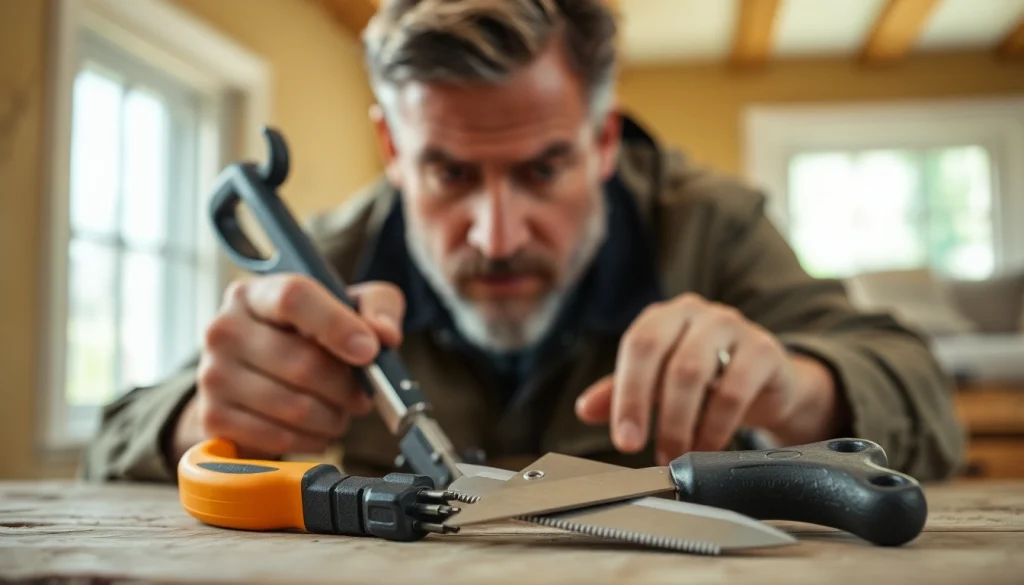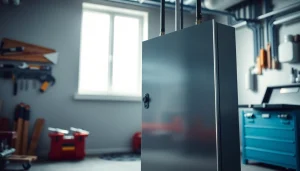Effective Termite Treatments: Safeguarding Your Home from Infestations

Understanding Termites and Their Habits
What Are Termites?
Termites are small, wood-eating insects that play a significant role in the ecosystem by decomposing dead trees and other plant materials. Though they are vital to nutrient cycling in forests, their propensity for infesting human structures constitutes a serious concern. These pests are social insects, living in colonies that can range from several hundred to millions of individuals. Most commonly found in warm climates, termites thrive in moist environments, making them highly problematic in residential settings.
Common Types of Termites
There are three primary types of termites that are of concern to homeowners:
- Subterranean Termites: These are the most destructive type, living in the soil and entering homes through the ground. They can travel over 100 feet from their nests in search of food.
- Drywood Termites: Unlike subterranean termites, drywood termites do not require contact with the soil. They infest dry wood and can often go unnoticed until significant damage has occurred.
- Dampwood Termites: These termites are typically found in damp or decaying wood. They prefer wood with a high moisture content and are less of a threat to well-maintained homes.
Signs of a Termite Infestation
Detecting a termite infestation early can significantly reduce the amount of damage incurred. Common signs include:
- Visible mud tubes on walls or foundations, used by subterranean termites to reach wood.
- Squeaky or hollow-sounding wood, indicating internal damage.
- Discarded wings or frass (termite droppings), which resemble sawdust, found near wooden structures.
Importance of Timely Termite Treatments
Consequences of Ignoring Infestations
Failure to address a termite infestation can lead to catastrophic damage to your home. Termites can weaken the structural integrity of buildings, leading to potentially dangerous collapses. Additionally, significant repair costs can accrue as the damage expands, impacting not just the wood, but also electrical systems, plumbing, and other integral components of the home.
Benefits of Early Detection
Early detection can save homeowners thousands of dollars. Routine inspections—ideally conducted annually—can catch infestations before they escalate. Moreover, having a comprehensive termite treatment plan helps keep your home protected, providing peace of mind and potentially increasing property value.
Cost-Effectiveness of Professional Treatments
Contrary to common belief, the cost of professional termite treatments can be less than expected when weighed against the potential costs of serious structural repairs. Many pest control companies offer inspections at little or no cost, enabling homeowners to gain insight into the state of their property without financial commitment. Termite treatments often come with guarantees, highlighting the value of investing in professional services.
Popular Methods for Termite Treatments
Liquid Treatments and Barriers
Liquid treatments are often the first line of defense against termite infestations. This method involves applying a chemical barrier directly into the soil around the foundation of the home. These treatments can be highly effective when applied correctly and can prevent future infestations while eliminating existing colonies. Liquid termiticides, such as fipronil and imidacloprid, target the nervous systems of termites, ensuring rapid elimination.
Baiting Systems Explained
Baiting systems utilize strategically placed bait stations around the perimeter of the property to attract termites. These stations contain a slow-acting insecticide that termites consume and take back to their colonies, where it eventually eliminates the entire colony. This method is particularly effective for subterranean termites and offers the dual benefit of monitoring termite activity while actively managing infestations.
Fumigation: When Is It Necessary?
Fumigation is a more aggressive approach that is typically reserved for severe infestations, especially in drywood termite cases. The process involves sealing the entire structure and introducing a lethal gas that permeates all areas, effectively eliminating termites hidden within wood and crevices. While it is highly effective, fumigation requires homeowners to vacate the property for a period, making it a less convenient option but often necessary for total eradication.
DIY Termite Treatment Approaches
Effective Home Remedies
For those inclined towards DIY solutions, several home remedies can assist in managing minor infestations:
- Borate Solutions: Borate can be mixed with water and sprayed on wooden surfaces as a preventative measure. It is non-toxic to humans and pets but lethal to termites.
- Orange Oil: High in d-limonene, orange oil can disrupt the termites’ ability to digest food, effectively poisoning them. It can be applied directly to infested areas, though its effectiveness may vary based on the severity of the infestation.
- Cardboard Traps: Setting out wet cardboard can lure termites away from wooden structures. Once infested, the cardboard can be burned or discarded.
When to Call a Professional
While DIY methods can work for minor problems, calling a professional is advisable when:
- The infestation is extensive, or significant damage is already apparent.
- Homeowners are unsure about the proper identification of the pest.
- An infestation reoccurs despite DIY treatments.
Safety Precautions When Using DIY Products
When employing DIY methods, safety should never be compromised. Homeowners should always:
- Read and follow label instructions on all pest control products.
- Wear protective equipment such as gloves and masks to prevent inhalation or skin contact.
- Ensure proper ventilation in the area being treated.
Preventing Future Infestations
Strategies for Homeowners
Prevention plays a critical role in termite management. Homeowners can take proactive steps by:
- Reducing moisture around the home by fixing leaks and ensuring proper drainage.
- Keeping soil and mulch away from wooden structures and ensuring a gap between the wood and soil.
- Storing firewood and other wooden materials away from the home and off the ground.
Regular Maintenance and Inspections
Regular inspections can detect termite activity before it escalates and can also identify new risk factors. Homeowners should perform checks of wooden structures, crawl spaces, and basements. Investing in professional inspections every one to two years can further protect the home.
Utilizing Termite-Resistant Materials
Using termite-resistant materials can significantly mitigate risk, particularly in new construction or major renovations. Options include:
- Pressure-treated wood, particularly for areas prone to moisture.
- Steel and concrete structures, which are impervious to termites.
- Composites made from recycled materials that are less appealing to termites.







